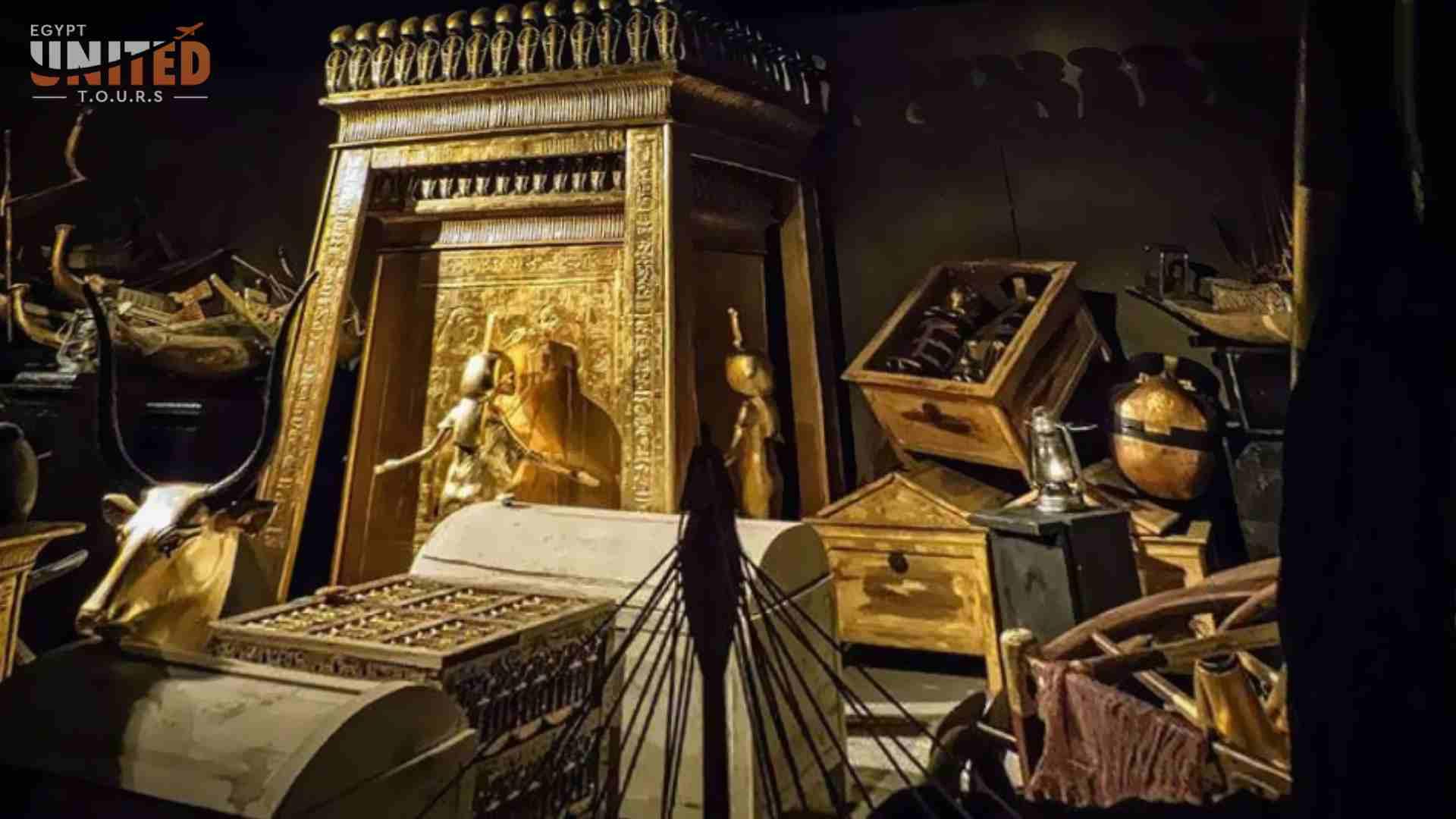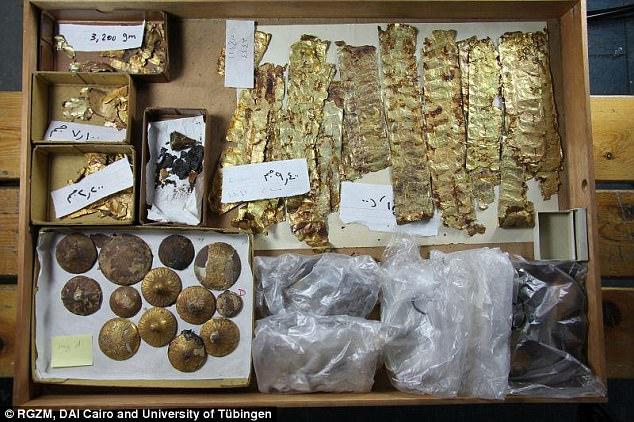A number of gold pieces of artwork found in King Tutankhamen’s tomb made in Syria have been revealed for the first time in almost a century.
Almost 100 decorative fittings for bow cases, quivers, and bridles were transported hundreds of miles to be placed in the Pharaoh’s 3,340-year-old tomb.
Their story can finally be told after they lay in a wooden box for more than 90 years after being discovered by British archaeologist Howard Carter in 1922.

The box had laid undisturbed in a Cairo museum for decades before researchers spent four years restoring its deteriorated contents.
Among the finds are images of fighting animals and goats at the tree of life that are foreign to Egyptian art and must have come from the Levant, or modern-day Syria.
Some of the gold artifacts (pictured) found in King Tutankhamen’s tomb were actually made in Syria rather than Egypt. Almost 100 decorative fittings for bow cases, quivers, and bridles were transported hundreds of miles to be placed in the Pharaoh’s 3,340-year-old tomb.

In 1907, Lord Carnarvon, George Herbert, asked English archaeologist and Egyptologist Howard Carter to supervise excavations in the Valley of the Kings.
On 4 November 1922, Carter’s group found steps that led to Tutankhamun’s tomb.
He spent several months cataloguing the antechamber before opening the burial chamber and discovering the sarcophagus in February 1923. Tutankhamun was an Egyptian pharaoh of the 18th dynasty, and ruled between 1332 BC and 1323 BC.
He was the son of Akhenaten and took to the throne at the age of nine or ten. When he became king, he married his half-sister, Ankhesenpaaten.

He died at around the age of 18, and his cause of death is unknown.
Lead researcher Professor Peter Pfalzner, of the University of Tübingen in Germany, said: “Presumably these motifs, which were once developed in Mesopotamia, made their way to the Mediterranean region and Egypt via Syria.
“This again shows the great role that ancient Syria played in the dissemination of culture during the Bronze Age.”
The embossed gold relics were found by his team in the very same crate in which they were placed in 1922 after the famed find by Carter.
At the time, the relics were photographed and packed into the crate, where they were left to deteriorate for almost a century.

During four years of detailed work, conservators at the Egyptian Museum in Cairo reassembled the fragments to produce the almost complete embossed gold decorations.
They also made drawings of the items and carried out comprehensive research.
Professor Pfalzner and colleagues examined and categorized the artwork on the artifacts.
The team distinguished Egyptian motifs from those that could be ascribed to an “international,” Middle Eastern canon from the Levant.

Among them are images of fighting animals and goats (pictured) at the tree of life that are foreign to Egyptian art and must have come from the Levant—or modern-day Syria.
These would have been shipped around 400 miles (645 km) to modern-day Cairo across desert and water.
The ancient Egyptians didn’t build roads to travel around their empire as they didn’t need them, thanks to the Nile.
Most major cities were located along the banks of the iconic river.
As a result, they used it for transportation from very early on, becoming experts at boat building and navigation.
Boats used to carry huge stones weighing as much as 500 tons from rock quarries to pyramid building sites



